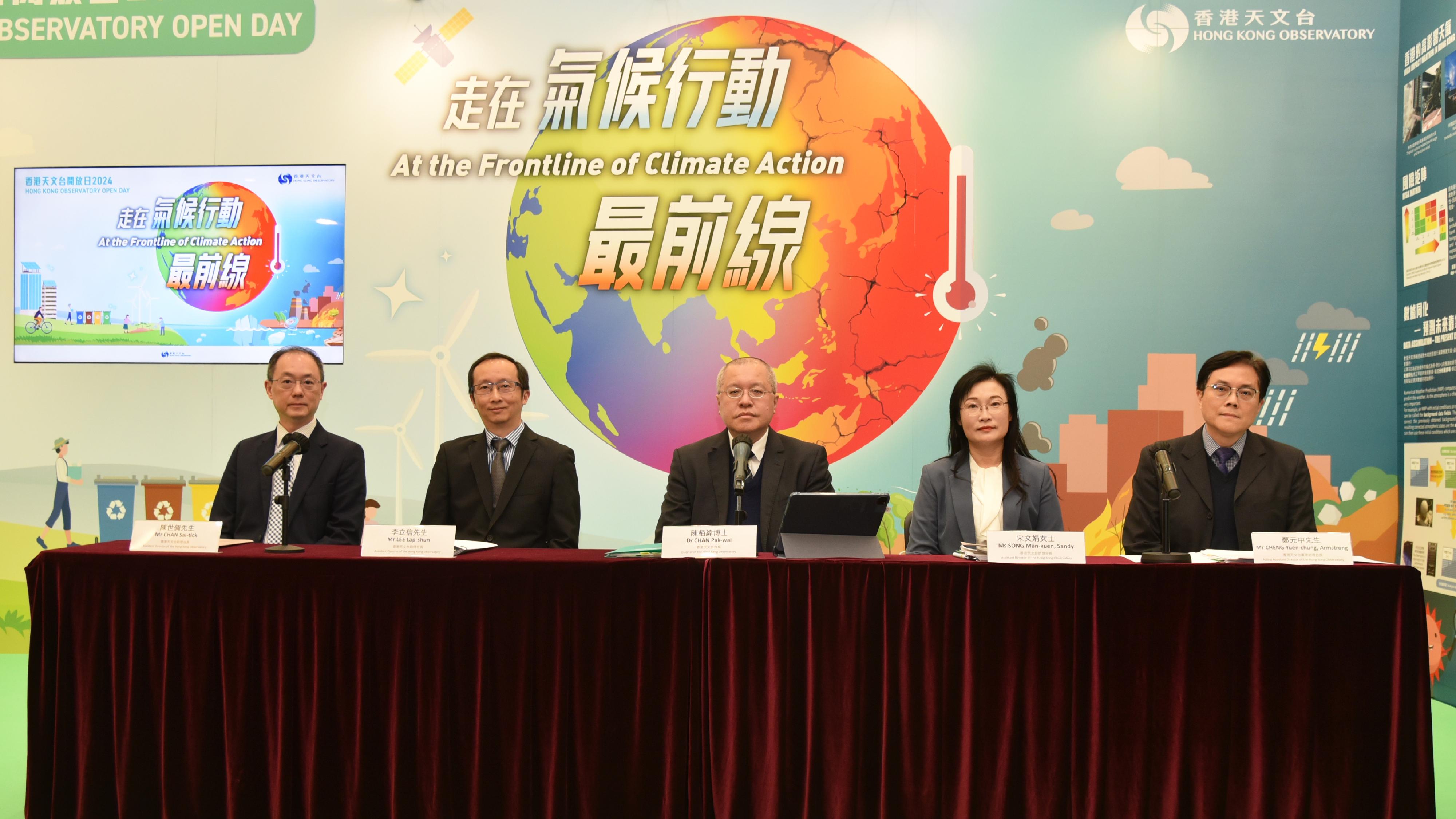The Census and Statistics Department (C&SD) released today (March 21) the preliminary Balance of Payments (BoP) and International Investment Position (IIP) statistics of Hong Kong for the fourth quarter of 2023 and the whole year of 2023. This release also included the preliminary External Debt (ED) statistics of Hong Kong for the same period.
I. Balance of Payments
Hong Kong recorded a BoP deficit of $9.1 billion (1.1% of Gross Domestic Product (GDP)) in the fourth quarter of 2023. Reserve assets correspondingly decreased by the same amount. This was against a BoP surplus of $16.1 billion (2.1% of GDP) in the third quarter of 2023.
For 2023 as a whole, there was a BoP deficit of $79.9 billion (2.7% of GDP), compared with a deficit of $367.2 billion (13.1% of GDP) in 2022.
Current account
The current account recorded a surplus of $71.2 billion (9.0% of GDP) in the fourth quarter of 2023. This reflects that Hong Kong's savings was greater than its investment, enabling Hong Kong to accumulate external financial assets (such as equity securities or debt securities) as a buffer against global financial volatilities. Compared with the current account surplus of $55.9 billion (7.6% of GDP) in the fourth quarter of 2022, the increase in surplus was mainly due to the increase in net inflow of primary income, partly offset by the switch in goods balance from surplus to deficit.
The goods account recorded a deficit of $6.8 billion in the fourth quarter of 2023, as against a surplus of $2.8 billion in the same quarter of 2022. Over the same period, the services surplus decreased slightly from $27.4 billion to $27.3 billion. The primary income inflow and outflow amounted to $475.2 billion and $420.3 billion respectively, thus yielding a net inflow of $55.0 billion in the fourth quarter of 2023, compared with a net inflow of $29.4 billion in the same quarter of 2022.
For 2023 as a whole, the current account surplus was $276.8 billion (9.3% of GDP), smaller than that of $286.1 billion (10.2% of GDP) in 2022, mainly due to the increase in goods deficit, largely offset by the increase in net inflow of primary income.
Financial account
An overall increase in financial non-reserve assets amounting to $46.5 billion (5.9% of GDP) was recorded in the fourth quarter of 2023, compared with an overall increase of $127.4 billion (16.6% of GDP) in the third quarter of 2023. The overall increase recorded in the fourth quarter of 2023 was due to the net increases in other investment and direct investment, partly offset by the net decreases in portfolio investment and financial derivatives.
In the fourth quarter of 2023, reserve assets decreased by $9.1 billion, as against an increase of $16.1 billion in the third quarter of 2023.
For 2023 as a whole, financial non-reserve assets recorded an overall increase of $353.7 billion (11.8% of GDP), compared with an overall increase of $644.0 billion (22.9% of GDP) in 2022. The overall increase recorded in 2023 was due to the net increases in portfolio investment and other investment, partly offset by the net decreases in financial derivatives and direct investment.
In 2023, reserve assets decreased by $79.9 billion, compared with a decrease of $367.2 billion in 2022.
II. International Investment Position
At the end of the fourth quarter of 2023, both Hong Kong's external financial assets and liabilities stood at a very high level, amounting to $48,301.7 billion (16.1 times of GDP) and $34,362.3 billion (11.5 times of GDP) respectively, a typical feature of a prominent international financial centre.
Hong Kong's net external financial assets (i.e. assets minus liabilities) amounted to $13,939.4 billion (4.7 times of GDP) at the end of the fourth quarter of 2023, compared with $13,324.6 billion (4.5 times of GDP) at the end of the third quarter of 2023. Hong Kong's net external financial assets to GDP ratio is one of the largest in the world, which provides the economy with a strong cushion against sudden external shocks.
III. External Debt
At the end of the fourth quarter of 2023, Hong Kong's gross ED amounted to $14,362.4 billion (4.8 times of GDP). Compared with $14,402.4 billion (4.9 times of GDP) at the end of the third quarter of 2023, gross ED decreased by $40.0 billion. This was mainly attributable to the decrease in debt liabilities in direct investment (intercompany lending), partly offset by the increase in ED of the banking sector.
As one of the world's major financial centres, Hong Kong has a significant amount of ED held against the local banking sector arising through normal banking businesses. At the end of the fourth quarter of 2023, 56.3% of Hong Kong's ED was attributable to the banking sector. Other ED mainly consisted of ED of other sectors (26.5%) and debt liabilities in direct investment (intercompany lending) (16.2%).
Further information
BoP is a statistical statement that systematically summarises, for a specific time period (typically a year or a quarter), the economic transactions of an economy with the rest of the world (i.e. between residents and non-residents).
IIP is a balance sheet showing the stock of external financial assets and liabilities of an economy at a particular time point. The difference between the external financial assets and liabilities is the net IIP of the economy, which represents either its net claim on or net liability to the rest of the world.
Gross ED, at a particular time point, is the outstanding amount of those actual current, and not contingent, liabilities that are owed to non-residents by residents of an economy and that require payment of principals and/or interests by the debtors at some time points in the future.
Table 1 presents Hong Kong's BoP. Table 2 presents the detailed current account and capital account, while Table 3 presents the detailed financial account. Table 4 shows Hong Kong's IIP, and Table 5 shows Hong Kong's ED.
Statistics on BoP, IIP and ED for the fourth quarter of 2023 and the whole year of 2023 are preliminary figures, which are subject to revision upon the availability of more data.
A new sign convention has been adopted for BoP statistics since June 2023. From then on: (i) debit entries in the current account and the capital account are switched from negative to positive figures; (ii) increases in assets and liabilities in the financial account are both indicated by positive figures; and (iii) the capital account and the financial account are no longer presented as a combined account. This sign convention complies with the international standards set out in the Sixth Edition of the Balance of Payments and International Investment Position Manual. It ensures consistency with national accounts and IIP statistics, and provides a simpler interpretation for BoP statistics.
The latest statistical tables of BoP (including seasonally adjusted current account), IIP and ED can be downloaded at the website of the C&SD (www.censtatd.gov.hk/en/scode260.html). Analysis of the statistics, together with the conceptual and methodological details, are presented in the publication Balance of Payments, International Investment Position and External Debt Statistics of Hong Kong, Fourth Quarter 2023 published by the C&SD. Users can download the publication at the website of the C&SD (www.censtatd.gov.hk/en/EIndexbySubject.html?pcode=B1040001&scode=260).
For enquiries about the BoP, IIP and ED statistics, please contact the Balance of Payments Section of the C&SD (Tel: 3903 6979 or email: bop@censtatd.gov.hk).

